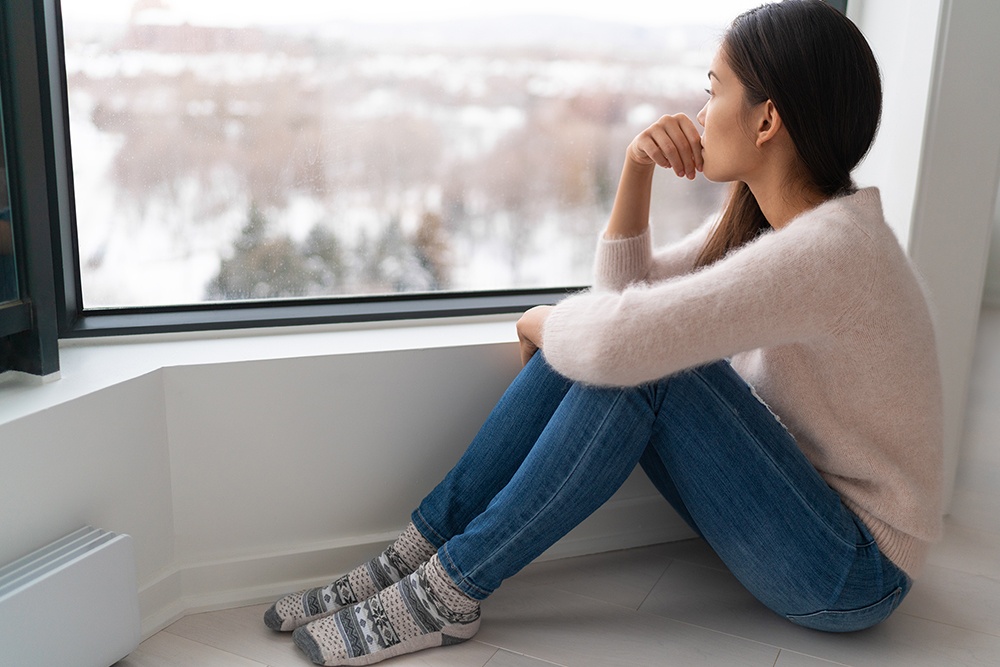When do you feel like winter has begun? Do you or does your child experience what’s often referred to as the winter blues? How can you tell if it’s more serious depression?
For many people, the period after the holiday season can be very difficult as we deal with cold weather, more darkness and less time outdoors. And it’s particularly challenging this year, as safety considerations related to the pandemic prevents us from gathering together to reap the emotional benefits of social connections.
While it’s perfectly normal to feel a bit blue during the winter months, for some people, the challenges can be more serious and lead to a condition known as SAD, for Seasonal Affective Disorder.
SAD is a type of major depression characterized by its seasonal pattern. While summer-pattern SAD does exist, it is far more common to experience SAD symptoms during the colder months when daylight is scarce, known as winter-pattern SAD.
According to the Mayo Clinic, symptoms of SAD may include:
- Feeling depressed most of the day, nearly every day
- Losing interest in activities you once enjoyed
- Having low energy
- Having problems with sleeping
- Experiencing changes in your appetite or weight
- Feeling sluggish or agitated
- Having difficulty concentrating
- Feeling hopeless, worthless or guilty
- Having frequent thoughts of death or suicide
Studies vary according to the prevalence of SAD, but it is estimated that about 10 million Americans experience the condition, with symptoms ranging from mild to severe. The age of onset is typically young adulthood, between 18 and 30, but younger people can be diagnosed with SAD. Four out of five people with the condition are female, and more live in the Northern parts of the U.S. Those with preexisting bipolar or major depressive disorder are more likely to have SAD. In addition, SAD sometimes runs in families.
Although the cause of SAD is not entirely clear, two chemicals in the body may play a role: melatonin, which is related to sleep and is produced in greater quantities when daylight is reduced; and serotonin, the “feel-good” chemical that is increased by exposure to sunlight and thus reduced in the winter.
Treatment for SAD may include light therapy, which involves sitting in front of a specially designed light box for 30-45 minutes a day; psychotherapy; antidepressant medications; and/or an increase in Vitamin D (although there is disagreement about this in the medical community). Getting outside in the sun more, even during the winter, is also recommended.
If your child or teen is diagnosed with SAD, here are some steps to consider, courtesy of Kidshealth.org:
- Participate in your child’s treatment. Ask the doctor how you can best help your child.
- Help your child understand SAD. Learn about the disorder and provide simple explanations.
- Encourage your child to get plenty of exercise and to spend time outdoors. Take a daily walk together.
- Find quality time. Spend a little extra time with your child. Your company and caring are important and provide personal contact and a sense of connection.
- Be patient. Don’t expect symptoms to go away immediately. Remember that low motivation, low energy and low mood are part of SAD — it’s unlikely that your child will respond cheerfully to your efforts to help.
- Help your child to eat right. Encourage your child to avoid loading up on simple carbohydrates and sugary snacks. Provide plenty of whole grains, vegetables and fruits.
- Establish a sleep routine. Encourage your child to stick to a regular bedtime every day to reap the mental health benefits of daytime light.
- Take it seriously. Don’t put off evaluation if you suspect your child has SAD. If diagnosed, your child should learn about the seasonal pattern of the depression. Talk often about what’s happening, and offer reassurance that things will get better, even though that may seem impossible right now.
If your child’s depression is impacting their ability to function, regardless of the cause, it’s important that you seek help. To contact North Shore Child & Family Guidance Center, call (516) 626-1971.
Sources:
https://www.nimh.nih.gov/health/publications/seasonal-affective-disorder/index.shtml
https://www.psychologytoday.com/us/conditions/seasonal-affective-disorder














